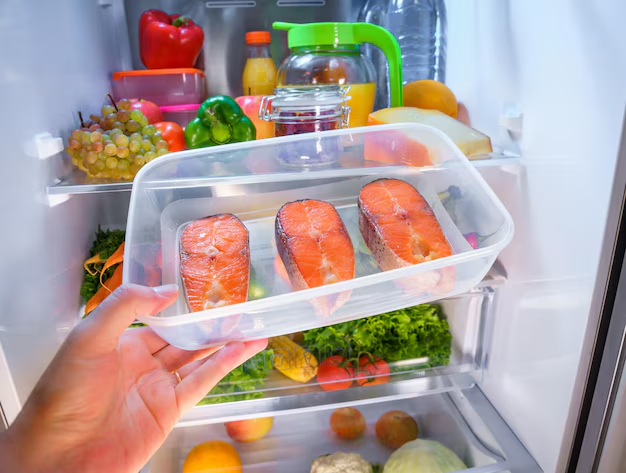How Long Does Barbecue Chicken Stay Fresh in the Fridge? Unpacking the Myths and Facts
Barbecue chicken is a versatile and beloved dish, often holding a cherished spot at gatherings, potlucks, or simply as a dinner favorite. However, post-barbecue, a common dilemma arises: How long can your savory, smoky chicken safely sit in the refrigerator? This question taps into broader concerns about food safety, spoilage, and proper storage, which is what we'll delve into here comprehensively. This guide will not only answer the core question but also provide important tips on safe storage practices, signs of spoilage, and methods to extend shelf life without compromising on taste or health.
🕵️ The Science of Spoilage: Why Chicken Goes Bad
Understanding Spoilage
Spoilage is a natural process that occurs when bacteria begin to break down proteins and fats in food, leading to changes in taste, smell, and potentially harmful effects. Chicken, like other poultry, is particularly vulnerable to bacteria such as Salmonella and Campylobacter, which can cause foodborne illnesses.
Temperature Matters
For safety, it’s crucial to store chicken at correct temperatures. The “danger zone” for bacterial growth in food is between 40°F and 140°F (4°C and 60°C). Thus, refrigeration should always be at or below 40°F (4°C), ensuring that bacterial growth is inhibited.
🗓️ The Shelf Life of Barbecue Chicken
Basic Storage Guidelines
Typically, cooked chicken, including barbecue chicken, can be safely stored in the refrigerator for 3 to 4 days. After this period, the risk of spoilage increases significantly. This guideline applies to properly cooked and stored chicken—details we’ll cover further.
Factors Influencing Freshness
Several factors can affect how long your barbecue chicken remains safe in the refrigerator:
- Initial Cooking: How thoroughly was the chicken cooked? Proper cooking reduces initial bacterial load.
- Storage Conditions: Was the chicken promptly transferred to the fridge and stored in an air-tight container?
- Handling: Were utensils, cutting boards, and hands properly sanitized before coming into contact with the chicken?
📦 Best Practices for Storing Barbecue Chicken
Immediate Actions Post-Cooking
After serving, try to refrigerate barbecue chicken within two hours. If the ambient temperature is above 90°F (32°C), aim to refrigerate within one hour. Use shallow containers to allow even cooling.
Storage Tips
- Air-Tight Containers: Use these to help prevent exposure to bacteria.
- Label and Date: This ensures you know how long items have been stored, reducing confusion.
- Cold Spots in Fridge: Avoid storing chicken in the fridge door, which tends to be the warmest area. Instead, opt for shelves toward the back.
🍗 Signs That Your Barbecue Chicken Has Gone Bad
Even with careful storage, it's essential to check your barbecue chicken for signs of spoilage before consuming. Here's what to watch for:
- Off Smell: A sour, ammonia-like, or otherwise unusual odor.
- Color Changes: Grayish or greenish hues are red flags.
- Texture: Sliminess indicates bacterial growth.
- Mold: Visible mold or other unidentified growth signifies spoilage.
🔄 Extending the Shelf Life: Freeze for Longevity
Proper Freezing Techniques
Freezing is an excellent way to keep your barbecue chicken convenient and safe for longer periods—up to three to four months. Here’s how to do it right:
- Cool Before Freezing: Ensure the chicken reaches room temperature or cooler before freezing.
- Tightly Wrap: Use foil or heavy-duty freezer bags to prevent freezer burn and maintain quality.
- Label with Dates: Just as in the refrigerator, labeling helps manage storage timelines.
Thawing Safely
When ready to enjoy, plan to thaw it safely:
- Refrigerator Thawing: The safest method, though taking longer (typically 24 hours).
- Cold Water Bath: Faster than fridge thawing, but it requires water changes and planning to cook right afterward.
- Microwave: Quick, but be prepared to cook immediately after thawing to ensure safety and quality.
🍖 How to Maintain the Flavor and Texture
Reheating Techniques
To avoid drying out your chicken, the following reheating methods can help retain moisture:
- Oven Method: Preheat to 350°F (175°C) and cook themed chicken with a bit of broth or water, wrapped in foil.
- Stovetop Sizzle: Warm on medium-low with a splash of water and covered pan.
- Microwave: Quick, but keep the power low or intermittent to prevent toughening.
Enhancing Leftovers
Get creative with your leftover barbecue chicken:
- Chicken Tacos: Shred and enjoy with toppings.
- Barbecue Chicken Salad: Combine with greens, corn, and a zest dressing.
- Wraps and Sandwiches: Perfect for a quick, satisfying meal.
🔍 Tips for Safe Food Handling
Practices to Adopt
Safe food handling is a critical part of preventing spoilage and foodborne illnesses:
- Regularly Sanitize: Keep your kitchen tools and surfaces clean.
- Avoid Cross-Contamination: Use separate utensils and boards for raw and cooked food.
- Check Fridge Temperature: Regularly ensure it stays at or below 40°F (4°C).
Food Safety Observations
Watching how your leftovers behave over time helps fine-tune your storage habits:
- Trust Your Senses: When in doubt, let smell and sight guide you.
- Practice Rotation: First in, first out. Consume older items before newer additions.
Summary: Best Practices to Keep Your Barbecue Chicken Safe 🍗❄️
- Refrigerate Within 2 Hours: Ensure air-tight storage to maximize freshness.
- Label Dates Clearly: Maintain awareness of shelf life through detailed labels.
- Watch for Spoilage Signs: Trust your senses—odor, color, and texture give clear cues.
- Consider Freezing: Extend shelf life up to four months with the proper method.
- Creative Leftovers Use: Transform into new dishes to reduce waste and enjoy variety.
In sum, understanding the lifecycle of your barbecue chicken can greatly enhance your dining experience, reduce waste, and keep your meals safe. By following these guidelines, you not only prolong the appetizing flavor of your barbecues but keep food safety at the forefront. Happy barbecuing, storing, and savoring!
